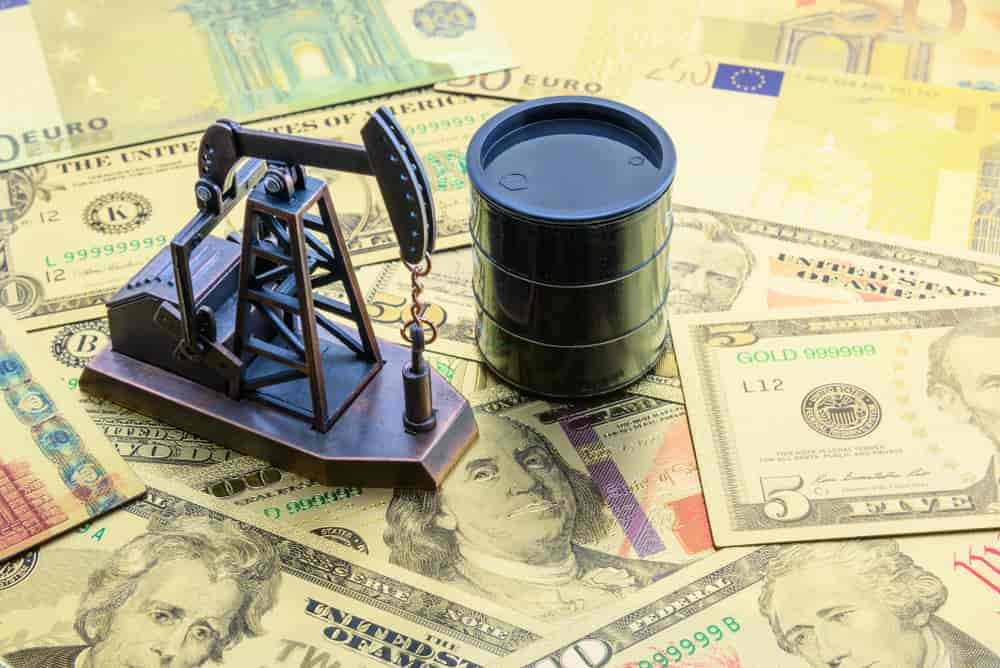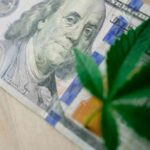Disclaimer: This comprehensive piece on crude oil prices is author’s personal subjective opinion and is not a recommendation to buy or sell any stocks, futures, or other derivatives.
As of late many crude oil analysts forecast an almost imminent oil price rise to $100 per barrel. Among them is Larry Fink, chief executive of the world’s largest asset manager BlackRock, who, while attending a conference in Saudi Arabia at the end of October, said that there is a high probability of oil reaching $100 a barrel as further gains look likely.
Moreover, at the same time influential U.S. investment bank Goldman Sachs stated that the Brent crude oil price was likely to climb above its year-end forecast of $90 per barrel. Finally, on November 1st Bank of America wrote in its note that it expects Brent to hit $120/b at the end of June 2022. Such predictions are rather noteworthy as just 18 months ago a barrel of oil was trading in the low $10s after a short dip into negative territory.
Unsurprisingly, there is lots of hype when it comes to the oil price as we haven’t seen WTI oil above $100 /b since July of 2014. On top of anticipation of this nice round figure, most of the world population is worried about runaway inflation. Therefore, it is natural to have lots of background noise when it comes to forecasting crude oil prices.
In this analytical overview, we look at the oil market fundamentals and related events going back to pre-COVID-19 fallout and provide a mid-term forecast that is somewhat different from the major financial institutions quoted above. On the other hand, this article does not include a macroeconomic overview, the value of the dollar or a possibility of the US technically defaulting on its debt at the end of this year, even for a brief period.
Major oil market developments in pre-pandemic period
In order to realize how we got where we are today, it is important to go back as far as 2014. The prudent way would be to look at this as one big trade. Since oil prices plunged in 2014 thanks to the shale oil revolution they stayed rather low for a few years. Finally, as oil hit $26/b in September 2016, two of the three worlds largest oil producers (the third being US) Saudi Arabia and Russia agreed to cooperate in managing the price of oil, creating an informal alliance of OPEC (The Organization of the Petroleum Exporting Countries) and non-OPEC producers that was dubbed “OPEC+”.
It worked for some time as a glut of oil diminished somewhat (despite some producers, notable Iraq and Nigeria kept breaking the quotas although Saudi Arabia produced below its quota).
In October 2018 as prices reached $75 (WTI) they fell again to the $50-$65 range. The main reason being that oil output increased in non-OPEC countries, especially the US (from 8.46 mb/d in July 2016 to 12.3 mb/d as of August 2019 (EIA data). Therefore, OPEC+ found itself in the same position as before the agreement to cut oil production and faced a dilemma should it fight for the market share or keep supporting the oil price. It chose to deepen production cuts. By January 2020, OPEC+ had cut oil production by 2.1 million barrels per day (bp/d), with Saudi Arabia making the largest reductions in production.
The problem with OPEC+ agreements is that every cut by the organization would just encourage non-OPEC producers, mainly the United States, but also Brazil, Canada, and others, to pump more oil, and due to oversupply prices would re-adjust downward. But the whole process would be slow and, in a monetary sense, painful for OPEC+.
The beginning of the pandemic in early 2020 presented an unparalleled opportunity for the organization to hit an American oil patch hard, and most importantly, in a time-efficient manner, some sort of blitzkrieg in oil games. Both, Russia and Saudi Arabia, declared the end to the production cuts agreement. On the 10th of March, Saudi Arabia announced that it would increase its production from 9.7 million barrels per day to 12.3 million, while Russia planned to increase oil production by 300,000 barrels per day.
At the same time, due to the pandemic-induced lockdowns, oil demand contracted at an unprecedented pace, which led to the oil prices collapse. Some blends in Canada were trading close to $0 in the spring of 2020. Even though both major producers – Russia and Saudi Arabia, officially blamed each other for the price war but it is rather obvious that the largest hit would be felt by private (mostly western) oil corporations who have to deliver returns to investors versus state-owned enterprises such as Aramco, Rosneft, Kuwait Petroleum Corp., Nigeria Petroleum Corp., etc. Those can tolerate certain hit to their bottom line for an extended period without cutting production if there is a political will to support such financial bleeding.
How this relates to the current oil price
Oil price rose from $10 in April 2020 to the current $80-$85 /b range yet production increase is minimal. According to the EIA (Energy Information Administration) before the “oil price war,” the US was producing 12.966kb/d (Nov-19). Output declined to 9.711 kb/d in May 2020. It rebounded to 11.326kb/d in July of this year before being disrupted by hurricanes in the Gulf of Mexico (it fell to 11.141kb/d in August – the latest available final estimate). The current production estimate stands at 11.3mb/d (Weekly Petroleum Report by EIA, not a final production data). That puts US production only 200kb/d higher than a year ago even WTI price rose by $45.42 compared to this day a year ago or a whopping +121.5%.
One way to look at this is to read between the lines. The hard lesson orchestrated by Russia and Saudi Arabia was that if shale oil is to be profitable, it has not to overproduce and not challenge OPEC’s global crude markets to share (organization in their estimates calls it “need for OPEC crude oil”, media simply describe it as “call for OPEC oil”).
Therefore, American oil producers do not challenge this new world order as it is highly profitable for them. This position is reinforced by ESG (Environmental, Social, and Governance) investing – more environmentally mindful capital allocations by major financial players, hence it is harder and harder to finance large upstream investment projects.
It is rather safe to say if not for OPEC and Russia’s punches that sent the oil patch into a knockdown in the first half of 2020, shale oil producers would now be running at a much faster tempo. Therefore, we need to keep in mind that going forward it is very unlikely the US and other non-OPEC producers would risk overproducing and provoking another “price war” with OPEC even there is no such formal agreement. Shareholders already showed they want to see healthy returns after many years of breakneck development as opposed to a higher market share.
Fundamentals: short demand and supply balance overview
First, we will look at the demand side of the equation. OPEC in its October monthly report estimates that refinery intakes in August rose by 6.4 mb/d, compared with the same month a year earlier.
This marks a significant measure ahead of the usual refinery maintenance season beginning in September and corresponds to a hefty 10.5 mb/d increase relative to levels seen in May 2020. Despite this considerable recovery, intakes in August remain nearly 2.5 mb/d below the pre-pandemic 2018-2019 average of 82 mb/d.
Total demand growth this year should be 5.8 mb/d followed by 4.2 mb/d next year. Despite this rapid demand growth, the total global demand for oil would reach a pre-pandemic level at the end of 2022. Gasoline and distillate consumption in the United States is back in line with five-year averages.
On the supply side, non-OPEC supply growth is expected to pick up speed next year with 3 mb/d growth (it leaves only 1 mb/d additional barrels required from OPEC as compared to this year).

Supply-demand balance is tilted toward the deficit but it is expected to shrink in the last quarter of this year and even out in the first quarter of 2022, hence backwardation in the oil futures.

Things to pay attention to in the short term would be November 4th OPEC meeting regarding changes in the output. The coalition has been raising output by 400,000 b/d per month since August and the next increase is almost certain for December. As well as a faster rise in shale oil output: the latest DPR (EIA Drilling Productivity Report) forecasts 77 kb/d addition in November (to 8219 kb/d) with Permian patch leading the pack (+62 kb/d).
On the demand side, experts will be following growing COVID-19 cases in Europe and developments in China’s real estate sector. Those two factors already play out in destroying WTI / Brent differential as the US economy is doing relatively well.
Among experts, it is common to attribute a $5 discount to WTI if it to compete in global markets because of higher transportation costs. Worth noticing that the differential (spreads) between Brent and the WTI (West Texas Intermediate) blend has narrowed to just $0.21 on the last trading day of October (it was fluctuating most of last year between $2-$4). This means that there are growing worries about demand for crude outside of the US rather than supply, while in the US it is more tilted towards issues with supply rather than demand.
This perception led to the erosion of the above-mentioned differential. This is important because, as per the long-term supply-demand overview below, most of the expected incremental demand should come from developing countries.
One notable source of demand in the short term is global air travel—which accounted for 16% of global transportation energy consumption in 2019—significantly declined in 2020. The IEO2021 Reference case estimates that global jet fuel consumed for passenger air travel declined nearly 50% in 2020, compared with 2019 levels. Passenger travel dropped from an estimated 90% of global commercial jet fuel consumption in 2019 to 75% in 2020.
Long term energy outlook
The reason to focus on long-term transportation is that despite all the claims how crude oil is useful in so many different applications but at the end of the day 71% of it is used as a transportation fuel (bcsea.org). And 2020 showed us what exactly transportation means for the global oil demand.

EIA reports that OECD oil consumption in transportation peaked in 2019. Therefore, it is natural that most commodity experts are looking at the general macroeconomic situation in Asia – the largest source of future incremental demand.
The ever-increasing importance of Asian energy markets to the demand side of the equation is reflected in the fact that non‐OECD energy consumption in the transportation sector surpassed that of OECD countries for the first time in 2020. EIA projects that transportation energy consumption should return to 2019 levels by 2022 for non‐OECD countries.

Significant growth in electric vehicle sales and their share of sales throughout the projection period causes the ICE (inner combustion engine) fleet to peak in 2023 for OECD regions and in 2038 globally (EIA). This is worth noting. In just two years times there won’t be incremental ICE fleet additions in the developed world (!). It seems that the auto market confirms this trend.
For example, Cleantechnica.com reports that global sales of EVs in September reached double digits of the overall market for the first time (10.2%). In this scenario, it is not hard to imagine that demand for non-renewable transportation fuel will start to shrink as older cars partially will be replaced with newer electric vehicles (will write more about the impact of EVs on transportation fuel in another article).
At the same time, Biden’s administration seems to be in a peculiar situation where it is asking for major oil producers to increase production while at the same time blocking construction of Keystone XL pipeline from Alberta oilsands to GOM refineries, as well as limiting new acreage allocations for drilling and introducing stricter environmental regulations on the industry.
Push for America transport fleet’s electrification (latest infrastructure bill calls for $15 billion for EV charging stations and public transport electrification plus another $66 billion for railways in the next five years according to CNN) doesn’t bode well with long term oil and gas capital investments.
“The real value of a barrel of oil”
Imagine driving during the strong blizzard in winter and trying to figure out where exactly the road goes. Sometimes the only way to know is to look far ahead. The same approach can be used to know the real equilibrium of commodities price or “the real value of a barrel of oil” if you will.
A look at CME Oil Futures contracts indicates that WTI price falls every subsequent month after the immediate one until November 2027 when it reaches $57.74 and stays below $60 until at least 2032. The average WTI price for the years 2024-2032 is $58.63. This relative price level could be seen as some kind of long-term oil price equilibrium where production doesn’t increase or contracts faster than aggregated demand. Certainly, we have to keep in mind it is priced in current dollars. For example, the average price for oil in 1946 was $1.63 per barrel but inflation-adjusted would cost $22.55 in today’s dollars (inflationdata.com).
We have looked at how we got here and what the relatively long-term price of oil is. Now we have to look at why it trades at roughly $25 premium and could it go up to $40-$60 above the long-term average derived from the futures contracts as many experts predict? Let’s imagine that premium is the price we pay for expectations.
If we could put expectations through fact-check we would be able to recognize the speculative nature of commodities trade and further dissect the price and attribute the value to each of those expectations (will talk more about his approach in the future articles).
Why should you be prudent regarding calls for $100 oil?
Needless to say, the current situation where Brent/WTI spreads are nonexistent is a positive one to OPEC as the largest crude oil producer US (on par with Russia at the moment) is not chipping away market share from the coalition, rather opposite, president Biden asks G20 for more barrels to bring domestic oil prices down. Despite these apparent shortages of barrels, there are darker clouds on the horizon as the pandemic is not over yet, and the hit to oil demand in China from real estate woes is not clear.
Another wild card is the resumption of Iranian oil exports that would add 1.5 mb/d to the markets if an agreement is finally reached with the international community that demands it cease weapon-grade uranium enrichment. Furthermore, International Energy Agency in its latest outlook warns that sustained high energy prices might lead to demand erosion.
EIA’s latest report demonstrates a hit to American consumers, for example, gasoline price (Oct 18) was $3.32 (compared to a year ago $2.15 (+$1.17) or whooping increase of 51.4%), diesel $3.67 (+$1.28 or 53.6%). In the US crude oil commands roughly half (49%) of gasoline price (the other price factors are Taxes (16%), distributing and marketing (13%), refining (19%).
Researchers disagree on the precise effect of gasoline price on demand but the latest data points out that price elasticity to gasoline demand is considerable. The price elasticity of gasoline demand is a widely used measure of the responsiveness of gasoline consumption to a change in gasoline prices that is not driven by demand.
An elasticity value of -1, for example, means that for every 1 percent increase in the real price of gasoline, gasoline consumption falls by 1 percent. An elasticity value of 0, in contrast, means that consumption does not respond to a change in the price of gasoline. Using credit card data, it is estimated that the U.S. price elasticity of gasoline demand ranges from -0.27 to -0.35.
Given that: a) gasoline demand already has fully recovered; b) high gasoline prices could dampen demand; c) rapidly increasing share of EVs; it is not clear where additional crude oil demand in the US will come from besides the aviation industry.
Another often mentioned source of demand is fuel switching for heating this winter because of the high natural gas price is yet to materialize. This premium somewhat already baked in the oil price projection has two highly fluid assumptions: first, that we will get a cold winter in the Northern hemisphere and, second, that natural gas prices will remain extremely elevated.
It seems that the market is stuck in a very technical trade. Oil prices are in firm ascending trade since reaching bottom in April 2020. Therefore, the market is willing to ignore any bearish signs that would derail this trend-driven trade. Although, it feels increasingly speculative. Additionally, CFTC Crude Oil’s speculative net positions are rather at multiyear average. This shows that seasoned traders are not extremely bullish on oil prices looking forward.
One example of market bullish bias could be that the market completely ignored the completion of expansion on Line 3 which is bringing an additional 370 kb/d of Canadian crude to Midwest markets starting this October (enbridge.com). And it is rather willing to focus on the potential switch from natural gas to fuel oils “if winter is cold”.
A slow increase in drilling rigs in the oil patch is overlooked somewhat as well. As per Baker and Hughes, North America rig count US oil and gas rigs almost doubled since last year and stand at 544 (up from 296 a year ago), a similar situation in Canada – 166 rigs (+80). Experts consider roughly 600 rigs level in the US as sufficient to start lifting output at a faster pace.
Major players are readying for a busier year as well. For example, on Oct 29, 2021, Chevron CFO Pierre Breber speaking on CNBC’s ‘Squawk Box’ informed that Capital expenditures are expected to rise at least 20% next year).
One of the most amazing facts in the current drum beating about oil hitting $100 per barrel is that it is mostly based on the presumed depletion of US oil inventory. It is low only if we look at the period from 2015 after the oil patch boom (and consequent self-destruction).
Crude oil stocks (excluding Strategic Petroleum Reserves or SPR) always (except for a very short period) stayed above 400,000 kb and currently sit at 430,812 kb. But if we look back to stocks between 1980 to 2015 the average would be close to 300,000 kb. Therefore, the word “depletion” is very relative at the present levels.

What’s next for oil prices
We can summarize that there is the possibility of oil hitting $100/b, and a higher probability of this happening is in near future rather than later as the time variable is almost certainly working against high oil prices. One reason to suggest that is simply because there is no crude oil shortage in the world when it comes to reserves in the ground as well reserves in storage as of 4Q 21.
Another reason is based on the fact that current supply constraints are rather man-made as opposed to objective physical reality as EIA estimates OPEC+ spare capacity would still be at around 5 mb/d in 4Q 2021 just as supply-demand is supposed to even out. All those variables are downright reflected in the strong backwardation of future contracts (there are no indications of price going towards $120 by the next summer).
Therefore, it is reasonable to think, such a spike in oil prices over $100/b would be rather short-lived. Although, high inflation has a positive influence on crude prices, and given the mood among producers, therefore, one would not assume prices would go much lower below $60.
As we enter next year, it is reasonable to expect prices to fluctuate at the $68-$78 range. The premium is paid on top of “base price” of $58.50), in my subjective opinion, in the range of $7-$17 for transition to clean energy (hence reluctance to invest in new oil projects) and is related to a global climate policy as companies prioritize value extraction over quantity extraction.
A small premium ($3-$4) also would include expectations for future inflation. Therefore, my personal forecast is fundamentally different from those mentioned at the beginning of this article. Given the short analysis above, it is reasonable to expect slightly lower crude oil prices by the summer of 2022 than they are at the beginning of November 2021.








